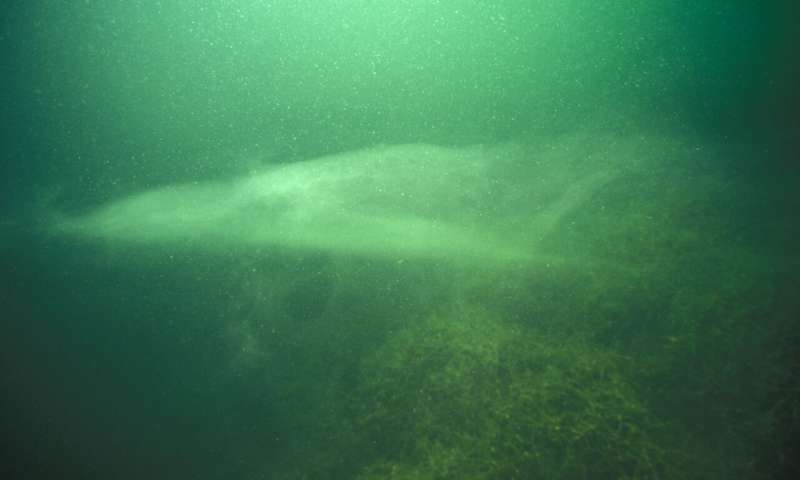Lake habitats are disappearing as the climate changes

Global warming is increasing the temperatures of lakes worldwide—are species finding the temperatures they need to survive? Researchers led by scientists at the Leibniz Institute of Freshwater Ecology and Inland Fisheries (IGB) have quantified the long-term temperature changes in 139 lakes worldwide. Those lakes represent about 69% of the Earth's freshwater habitats by volume. The researchers analyzed shifts in thermal habitats—the temperature conditions needed by species to survive. They found that as lakes warm, species will need to shift to different depths or seasons to find suitable thermal habitat. But not all species will be able to shift. The study was published today in Nature Climate Change.
Most aquatic species are ectothermic—that is, their body temperatures adjust to the ambient temperature of the water. In this context, each species has its own individual temperature range to which its body functions. Temperature therefore largely determines where and when species can live in lakes.
The researchers studied how thermal habitats in lakes change—shrink or expand—in response to climate change. To do so, they analyzed more than 32 million temperature measurements at different water depths—so called depth profiles—from 139 lakes worldwide. They defined temperature habitat changes as the difference between current lake temperatures compared to a previous baseline period. Thermal habitat change was quantified as the percentage of thermal habitats that were lost or gained when comparing these two time periods.
For less adaptable species, habitats are reduced by nearly 20 percent
Long-term temperature change resulted in an average of 6.2% difference between thermal habitats in the baseline (1978-1995) and current periods (1996-2013) and the thermal difference increased to an average of 19.4% for hypothetical species that were constrained by season and depth.
"Species will have to shift their depth or seasonality to meet their thermal requirements as lakes warm. That may be no problem for generalist species with a broader temperature tolerance, but not all species are so adaptable" explained Dr. Benjamin Kraemer, first author of the study from IGB.
Lakes are like islands or mountaintops—it is often difficult to escape the changing environmental conditions
Species can cope with temperature increases by changing their seasonality or depth to seek out suitable thermal habitats, but these responses may be constrained by ecological interactions, life histories or limited resources. For example, some algae species grow best in well-lit environments near the surface of lakes while some fish may not be capable of occupying deeper parts of lakes where there isn't enough oxygen. Daphnia, a common herbivorous zooplankton genus, partially rely on photoperiod as a cue for diapausing eggs to develop in spring thereby limiting their capacity to track earlier phytoplankton blooms as lake temperatures change.
Thus, suitable thermal habitats may shrink or expand to the point that some native species become threatened others become more prominent and non-native, invasive species spread. For example, the round goby is an invasive species that does very well with a range of temperatures.
"Changes in thermal habitat can have a strong impact in lakes because, as species on islands and mountaintops, some lake organisms are restricted in their dispersal by the boundaries of the lake," said IGB Professor Rita Adrian, who led the study, explaining the problem.
Lakes in the tropics are particularly affected
The researchers showed that lakes in the tropics are particularly affected by the shift in temperature habitats: "We had expected temperate and arctic lakes to have a relevant thermal difference because surface warming rates tends to be high there. That is the case. But what surprised us is that tropical lakes show even much higher thermal shifts. This might have a relevant impact on species as the temperature tolerances of organisms tend to be lower in the tropics, where natural environmental temperature variation is low," concluded Benjamin Kraemer.
The shrinking and expanding of temperature habitats highlights how dramatically ongoing climate change could affect lake communities and biodiversity.
More information: Benjamin M. Kraemer et al, Climate change drives widespread shifts in lake thermal habitat, Nature Climate Change (2021). DOI: 10.1038/s41558-021-01060-3
Journal information: Nature Climate Change
Provided by Forschungsverbund Berlin e.V. (FVB)




















